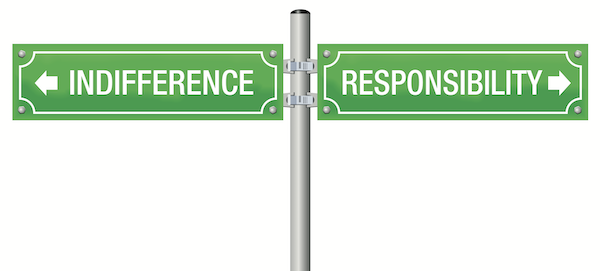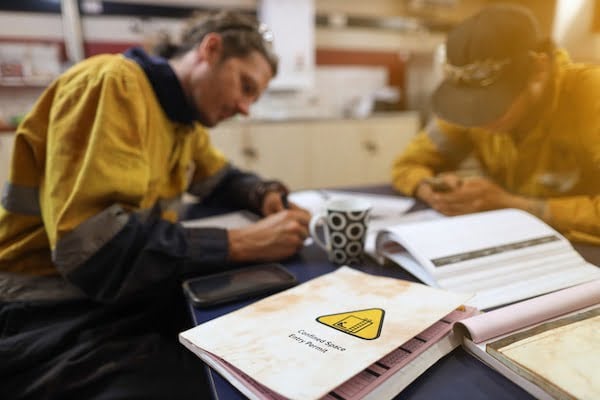Why manage health and safety in the workplace?
In this article we cover in detail the 3 main reasons why all businesses should properly resource and manage health and safety. The 3 reasons are Moral, Legal and Financial.
It can easy for those who lead organisation to consider health and safety management as expensive or needless bureaucracy. Regulations can seem vague or pernickety.
But anyone who looks closer will see that appropriate health and safety management is the foundation of all effective organisations. Remember the maxim, if you think safety’s expensive, try an accident!
This article covers in more detail WHY it is important to manage health and safety. We also have an article on HOW to manage health and safety here.
Before we detail each obligation lets just define what we actually mean by health and safety.
HEALTH – Is defined by the World Health Organisation (WHO), in 1948 as:
“a state of complete physical, mental and social well-being and not merely the absence of disease or infirmity.”
SAFETY – May be considered to be the state of being safe, i.e. free from the unacceptable risk of injury, danger, or loss. The key word being ‘unacceptable’. You don’t need to eliminate risks. That is not possible. You simply need to remove unacceptable risks.
REASON 1 – MORAL

Moral – refers to what is right and wrong
Morals are the codes of conduct, or rules of behaviour imposed by a society regarding what is right and wrong.
For people to be killed, or seriously injured, or to suffer illness as a consequence of work is clearly wrong.
Although, in the UK there are generally good standards of workplace health and safety a lot of harm is still caused each year.
The Health and Safety Executive (HSE) publishes annual statistics of reported cases of workplace injury and illness. As can be seen the numbers of cases of occupational illness is significantly higher than the numbers of injuries.
Typical numbers of reported accidents are below
| Injury Type | Typical numbers each year |
| Fatal injuries (all workers) | 150 |
| Notified major injuries (e.g. broken arm or leg) | 20 000 |
| Reported ‘over 7 day’ injury (unable to do normal work for more than 7 days) | 60 000 |
Typical numbers of cases of ill health each year are below
| Type of ill health | Typical numbers of cases over recent years |
| All occupational illnesses | 1 200 000 |
| Musculoskeletal disorders | 520 000 |
| Stress, depression and anxiety | 440 000 |
Below are numbers of workplace deaths attributable to occupational cancers. The total is more than 30x that for fatal injuries.
| Causes of death | Estimate of deaths each year |
| Occupational cancers (general) | 8 000 |
| Asbestos related cancers | 4 000 |
REASON 2 – LEGAL
There are two systems of law that influence the management of health and safety.
The criminal law establishes a set of rules for acceptable behaviour. In the workplace the main duties are covered by the Health and Safety at Work Act 1974 and the Management of Health and Safety at Work Regulations 1999.
If the necessary standards are not met the enforcement agencies (the HSE, the Office of Rail and Road – ORR, or the local authority environmental health department – EHO’s, depending on the nature of the work) may take action to secure improvements and / or punish offenders for breaking the rules.
The civil law allows an injured person to sue a third party for compensation for their injury or loss if the injury was caused through the third party’s negligence.
Here we have a comprehensive article on the laws around health and safety.
REASON 3 – FINANCIAL

Beyond moral and legal reasons (if thats not enough!), financial motivations, are a big motivator for many organisations. Accidents clearly cost money as a consequence of injured people, damaged plant and machinery and wasted product.
Health and safety costs can be classified broadly into two overall categories:
- The costs of control: Risk assessment; and the development and implementation of a health and safety management system to manage preventive and protective measures. These costs tend to be relatively stable; and
- The costs of failure: The consequences of occupational accidents or work related illnesses including direct expenditures, raise in existing costs, potential reduction in income as well as opportunity costs, which will vary with the type and number of consequences.
Lets have a look at some specific examples of financial costs from not managing health and safety properly.
HSE research showed that occupational injuries and illnesses cost the UK £20.7 billion pounds in 2021/22 considering the total costs to individuals, employers and society. The costs arise from 23.3 million days lost due to work-related ill health and 4.1 million due to workplace injury.
The costs of highly visible accidents involving large scale loss of life or major property damage as a result of fire and explosion are often determined by official inquiries.
- The BP Texas City fire and explosion in 2005 cost over $21 million in fines, $2 billion in civil claims, and $1billion in reinstating the site.
- The Buncefield oil refinery fire in 2005 is believed to be the most expensive accident in UK history with a total cost of over £1billion, including £9.5 million in fines.
In 1989 the HSE began a series of five case studies with organisations from different industrial sectors with the aim of developing a means accurately identifying the full cost of accidents.
The study findings were published 1996 in a HSE Guidance booklet “The Costs of Accidents at Work (HSG96)”.
The five participating organisations / projects were: a construction project; a creamery; an independent transport company working with the creamery; a North Sea oil platform; and an NHS hospital. All had a history of average, or better than average health and safety performance.
The study used a definition of ‘accident’ covering a broad range of losses including: injury and ill health; damage to property, plant, materials and the environment; and the loss of business opportunity.
All personal injury accidents were included as were all other losses above a minimum reportable level which was set at the minimum unit of product or its financial equivalent.
The study accounted separately for financial and opportunity costs.
Financial costs are the basic costs incurred to return the situation to what it was before an accident happened. This covers both material and labour costs.
Opportunity costs (or lost opportunity costs) include those incurred through: people stood idle or being unproductive as a result of dealing with the consequences of an accident; and energy costs from plant running idle and buildings being lit and heated.
HSE Guidance from 2002 “Reduce Risks – Cut Costs” (INDG355) identified three methods for quickly and crudely estimating uninsured costs of accidents:
- The uninsured costs of an accident are approximately 10x the insurance premiums paid;
- Uninsured losses from accidents in smaller firms add up to £315 per employee per year; and
- The average uninsured cost of an accident causing absence from work is approximately £2100.
Making the costs of accidents explicit and drawing the information to managers’ attention may not be sufficient on its own to motivate managers to consider health and safety factors as part of their business decision making processes.
Unless the answers to the following variables are positive the calculation of health and safety costs are unlikely to help:
- The significance of health and safety costs relative to other cost categories or company turnover in the company;
- The level of direct influence management action has over health and safety costs;
- The lag between management action and the effect on health and safety costs (so that managers can see the benefits of their actions); and
- Management access to information about the effects of management initiatives on health and safety costs.
Insured and Uninsured Costs
HSE Guidance on the real costs of accidents at work indicates that the uninsured costs of an accident may be more than 10x the insurance premiums paid. Figure 2 shows examples of accident costs that would not be covered by employers’ liability insurance.
Employers Liability Insurance Claims
The Employers’ Liability (Compulsory Insurance) Act 1969 requires most employers to have at least £5 million pounds of insurance cover (most policies offer at least £10 million of cover) available for compensation payments to employees injured or made ill as a result of work.
The exceptions to the Regulations include businesses with no employees, family businesses and public organisations such as a local authority or NHS Trust.
The number of civil claims for compensation against employers as a result of accidents fell steadily in the early twenty first century and the total cost of compensation cases in Britain has remained, in real terms, static since 1989.
More than 850,000 people are injured or made ill as a result of their job each year. The Association of British Insurers (ABI) put the numbers who gain compensation from their employer at around 60,000 a year.
Average damages for an ELI claim are £7,500. Britain pays out much less on civil compensation (as a percentage of GDP) than other major European countries and about a third of the USA figure.
The average cost of EL insurance is 0.25% of total payroll costs and is the lowest in Europe.
In 1999 the ABI reported that the cost of claims and costs was 54% higher than the amount that the insurance premiums. Since then the costs of ELI have been seen to rise significantly. The major driver for this has been the global economy, not an increase in the number of claims or the size of compensation awards.
Other factors include major increases in legal and medical costs (50% more than inflation) largely because of failure to follow the civil procedure rules resulting in unnecessary costs.
Costs and Benefits of Health and Safety Management
“If you think safety’s expensive, try an accident” is an often cited maxim which was brought back to the fore by Sir Stelios Haji-Iaonnou in his 2004 interview on BBC Radio 4s “On the Ropes.”
This comment followed the Troodos shipping company tanker M/T Haven (formerly Amoco Milford Haven) exploded, caught fire and sank off the coast of Genoa, Italy in 1991, killing six Cypriot crew members and leaking 50,000 tonnes of crude oil into the Mediterranean.
Stelios (and his father) faced manslaughter charges in Italy before eventually being cleared in the Italian Supreme Court.
Stelios also reflected that “it takes years to build a reputation, but it can be destroyed overnight.”
Contact us if you wish to discuss our online safety training solutions.




